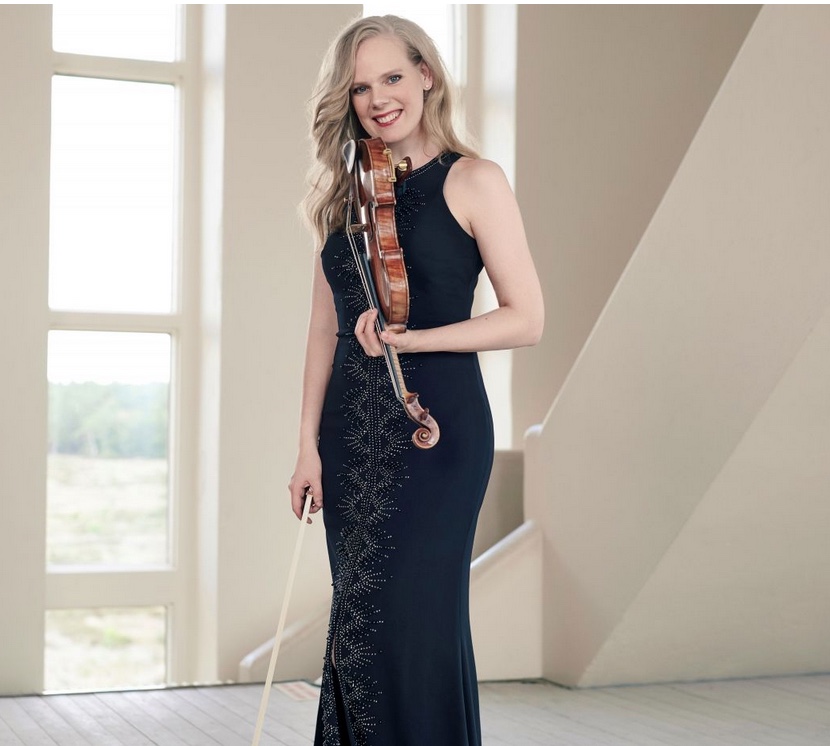by Kevin McLaughlin

First was a deft reading of Ravel’s “Alborada del gracioso” (Dawn Song of the Jester), the composer’s Spanish scherzo, an orchestrated movement from his Miroirs for piano. Gabel seemed to discharge electric current, sustaining a sense of tension — if not danger — throughout. Solo winds never slackened through extended passages of rapid articulation — and how fun to hear castanets played at that speed! Gareth Thomas’s lovely bassoon solo, the Jester’s woeful serenade, added humor in the right place.
The French-Spanish love-fest continued with Saint-Saëns’ Concerto, written in 1880 for the Spaniard Pablo Sarasate and played on Saturday by the gracious and commanding Simone Lamsma. She has the technical rigor that makes this concerto sound easy, and a warmth of tone that causes babies to stop crying (which a couple of them did on Saturday night).
She also met the style of the piece without dragging it down with bluster. There was lightness of touch and lyrical fantasy, too, to elevate the flights of bravura. The heart of the Concerto is the barcarolle central movement, with its enchanting melodies, elegantly phrased by Lamsma. A passage of arpeggiated harmonics, played in duet with the clarinet, was particularly lovely at the close of the movement. Her Finale was music that sang, danced, and sprinted. A heavenly chorale in the final bars, one of Saint-Saëns’ signature touches, heralded a thrilling conclusion.
The Suite No. 2 from Manuel de Falla’s El sombrero de tres picos (“The Three-Cornered Hat”) contains some of the best dances, hitting on the highest dramatic elements from the Diaghilev ballet, saving us a trip to the theater. Orchestras sometimes phone in these ballet suites, but not the Clevelanders. A full-throated seguidilla to celebrate the Feast of St. John was vivid thanks to the musicians and to Gabel’s pacing. The jealous miller’s dark and fiery flamenco in movement two was suitably raunchy. The final jota hit the climactic sweet spot, giving voice to every character, and encapsulating the narrative — the miller, his beautiful young wife, and a lecherous Corregidor, the local magistrate, whose position is symbolized by the three-cornered hat.
Daphnis and Chloé’s final fifteen minutes (the exciting bits), which Ravel labeled Suite No. 2, made for a satisfying conclusion. The splendor of the score saturated the night air and reminded everyone of the composer’s supreme abilities as an orchestrator. Gabel coaxed sultry sensuality from the strings, arresting color and precision from the winds and brass. Joshua Smith’s flute solo, played as Pan himself might have, wafted in the air as one final siren call of summer.
Published on ClevelandClassical.com August 30, 2023.
Click here for a printable copy of this article



